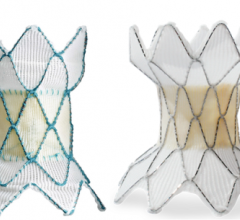
February 10, 2016 — Fred Hoiberg, head coach of the National Basketball Assocation’s (NBA) Chicago Bulls, is launching a new patient education campaign featuring a video recounting his experience as a heart valve patient. The video premiered January 14 on www.HeartValveSurgery.com.
A 10-year NBA veteran who had played for the Indiana Pacers, Chicago Bulls and Minnesota Timberwolves, Hoiberg had open-heart surgery in April 2015 to replace his failing bicuspid aortic heart valve, a heredity structural malformation that had been causing increasing fatigue and shortness-of-breath.
The campaign, designed to help people with heart valve problems learn more about their condition and treatment options, is sponsored by On-X Life Technologies Inc., the company that made Coach Hoiberg’s aortic replacement heart valve. The full video is available here.
Hoiberg, who had an open-heart surgery a decade earlier to address life-threatening problems with an aortic aneurysm, was seeking a single, life-long solution to his aortic valve problem and agreed when his doctor recommended he receive an On-X Aortic Heart Valve.
“The On-X valve is expected to last throughout my lifetime, so I don’t have to worry about the possibility of future re-operations, which would have been likely if I’d received a tissue valve,” Hoiberg said. “I also didn’t want to put my family through all of the stress related to needing additional surgeries in the future.”
“Tissue valves last longer in older people and are less durable in younger people, and there are risks with every subsequent reoperation for valve failure,” said Marc Gerdisch, M.D., chief of cardiovascular and thoracic surgery at Franciscan St. Francis Heart Center in Indianapolis.
“If Coach Hoiberg had, at his age and physical activity level, received a tissue valve instead of the On-X aortic heart valve, he’d likely have needed another one, and even another one after that during his lifetime,” Gerdisch said, adding that most tissue valves are documented to fail structurally in 15 years or fewer in patients younger than age 60.
While some patients may choose replacement valves made of animal tissue in hopes of avoiding taking the blood-thinning medication warfarin, many patients also require warfarin therapy in order to manage their other health conditions, such as atrial fibrillation (AFib).
“I’ve heard that some people have concerns about taking blood-thinning medication after getting a mechanical valve, but it hasn’t been an issue for me. I’m very physically active, yet I haven’t had to make any major changes in either my activities or my diet because I’m taking blood-thinners,” said Hoiberg.
Gerdisch added that patients with On-X aortic heart valves are the only ones in the United States who have been allowed by the U.S. Food and Drug Administration (FDA) to reduce their blood-thinning medications to “near normal” levels.
“In a multi-year clinical study, we demonstrated that patients who had received an On-X aortic heart valve could be safely and effectively managed at much lower levels of blood thinner medication. Our findings showed that there are significant reductions in complications with the On-X valve when compared to any other valve, whether mechanical or tissue,”1 said Gerdisch, who also served as a principal investigator of the PROACT (Prospective Randomized On-X Anticoagulation Clinical Trial) study. “The On-X valve is a genuine innovation and the only mechanical valve that I implant.”
On-X replacement heart valves are bileaflet prosthetic valves made of pure pyrolytic carbon. Clinical evaluations have shown that the On-X Aortic Heart Valve features a unique material and design, which have been clinically documented to have lower complications than other mechanical heart valves.
For more information: www.onxvalve.com



 March 31, 2025
March 31, 2025 








